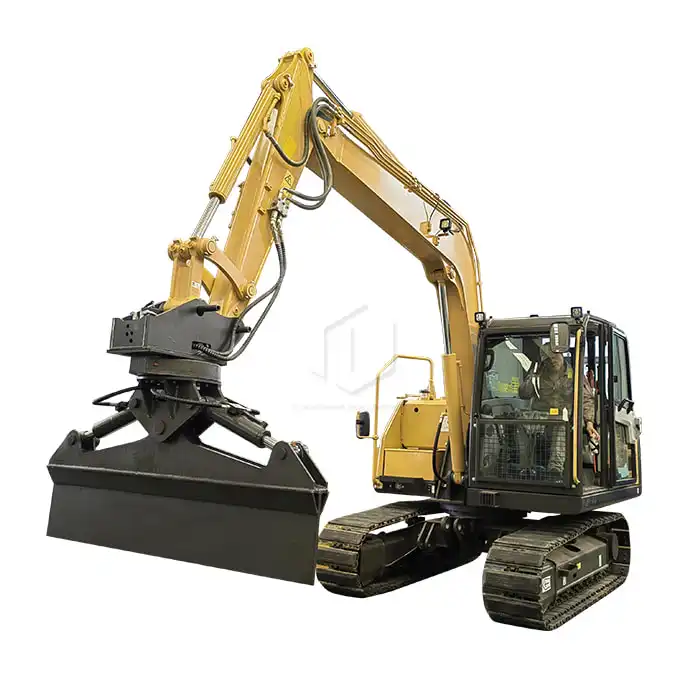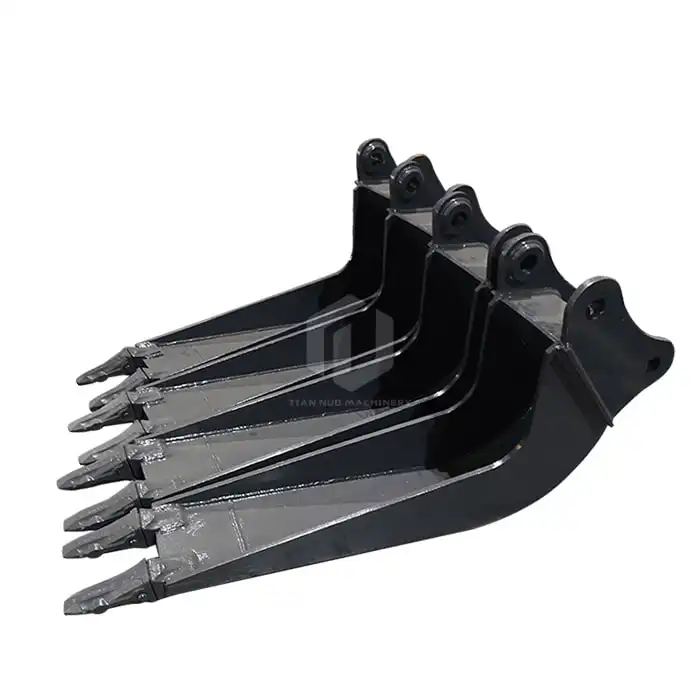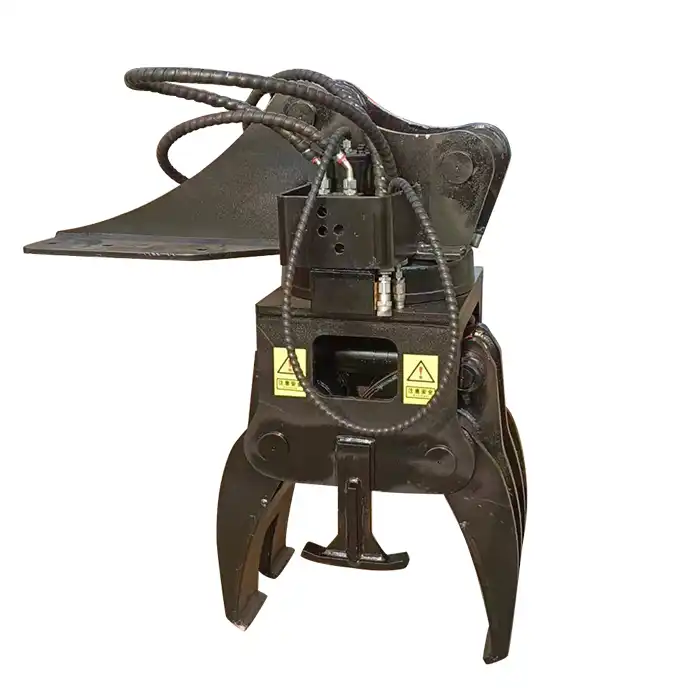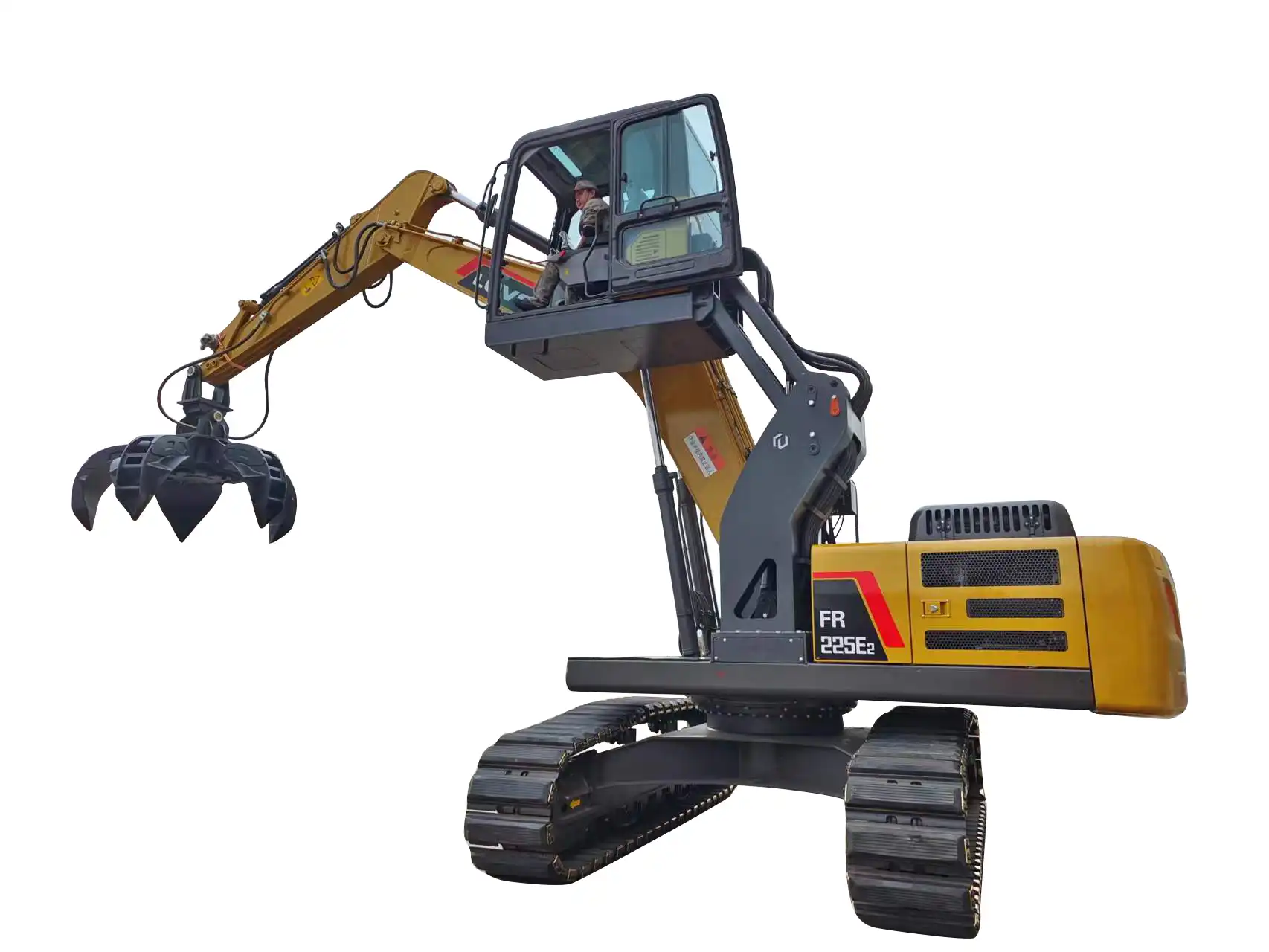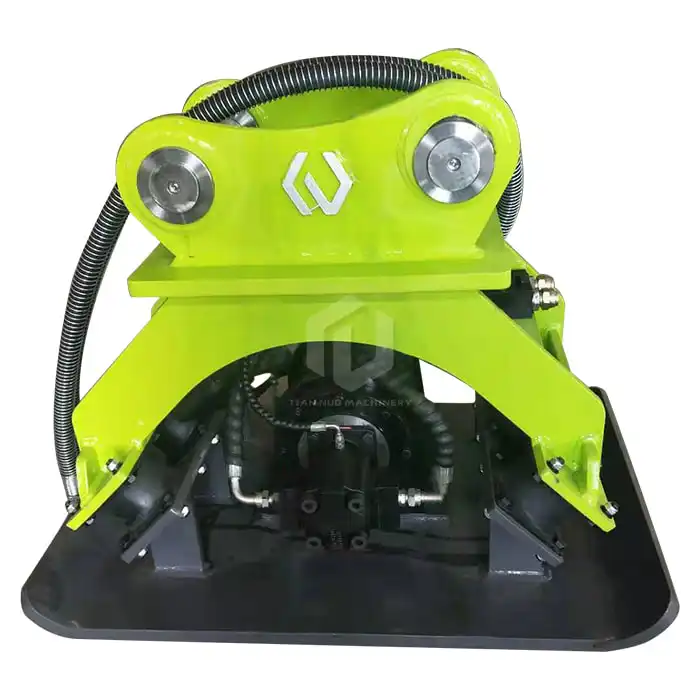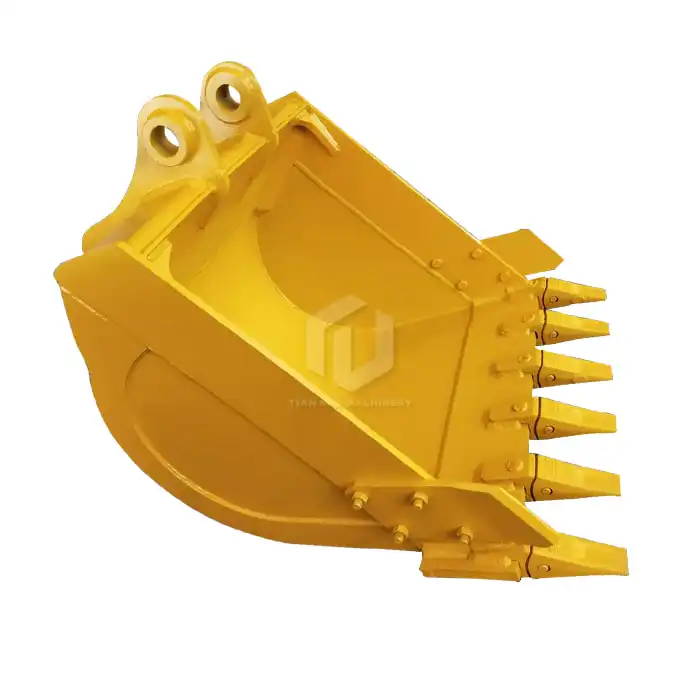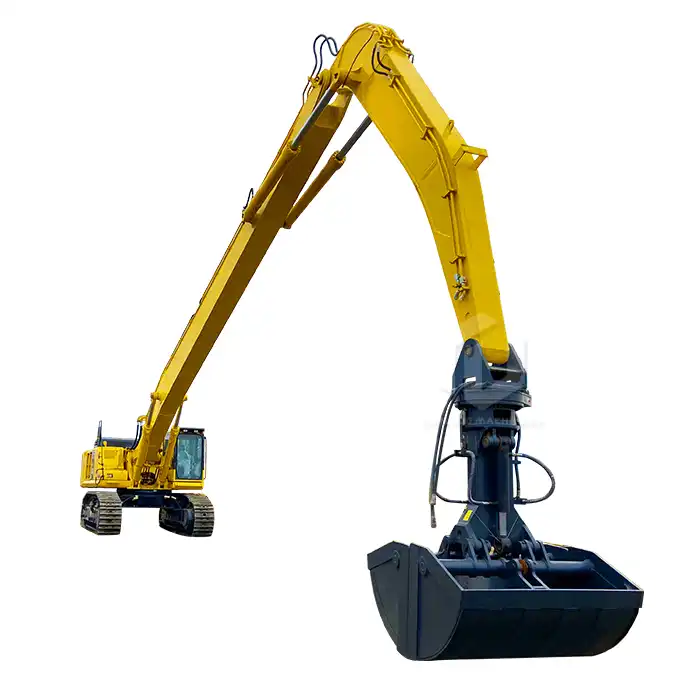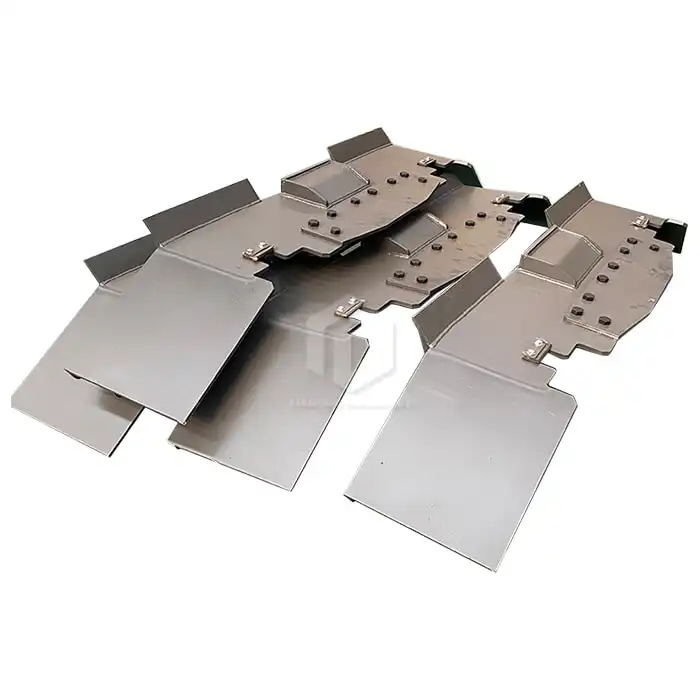Hydraulic Excavator Gripper VS Mechanical Excavator Gripper
As technology advances, the debate between hydraulic and mechanical excavator grippers has become increasingly relevant. Tiannuo Machinery's blog delves into the key differences between these two types of grippers, focusing on their drive modes, gripping force, and operational flexibility.
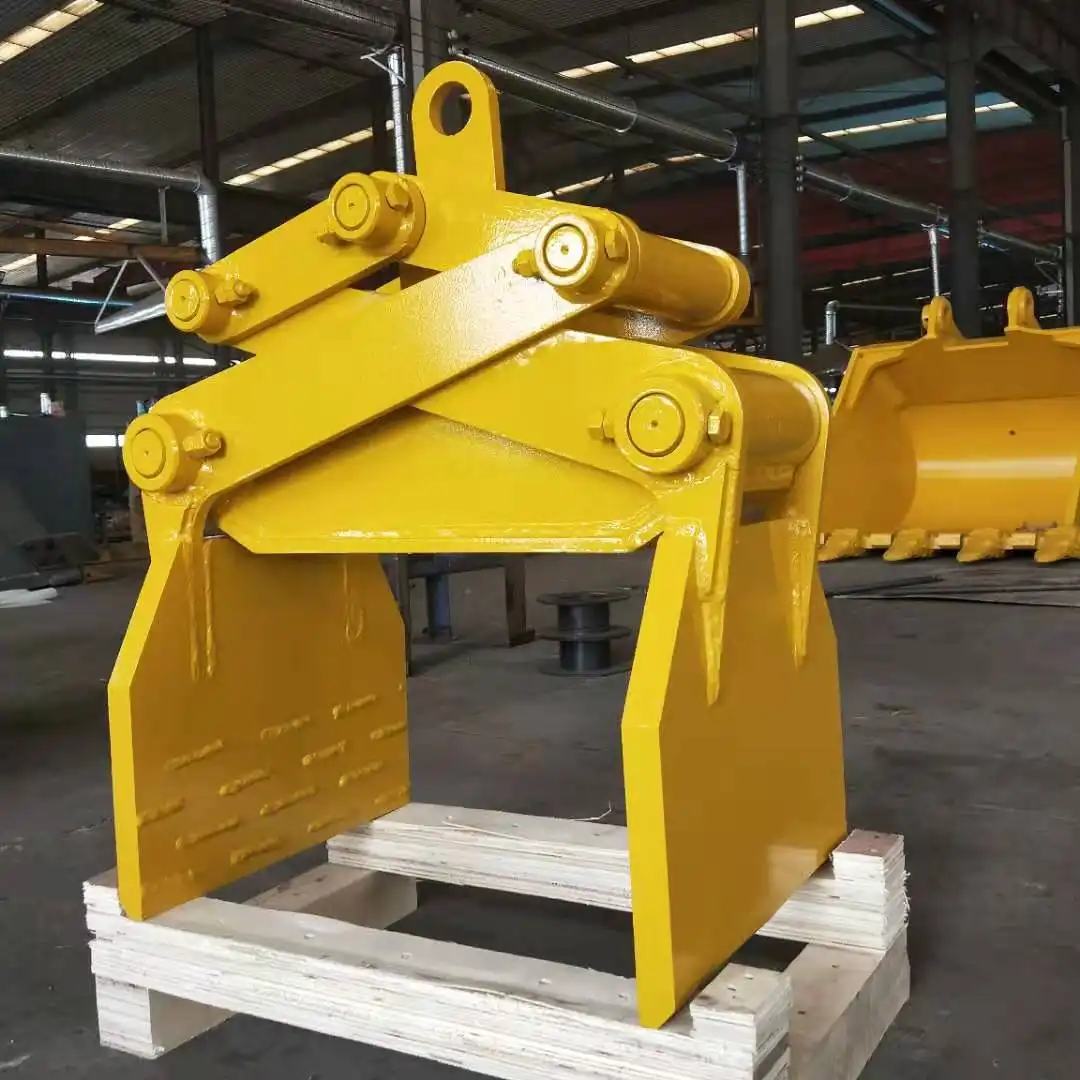
Drive Mode: Hydraulic vs. Mechanical Systems
The drive mode of an excavator gripper plays a crucial role in its performance and efficiency. Hydraulic and mechanical systems each have their unique characteristics that influence their operation and applications.
Hydraulic excavator grippers utilize fluid power to generate force and movement. These systems consist of hydraulic cylinders, valves, and pumps that work together to create the gripping action. The hydraulic fluid is pressurized and directed through a series of valves and pipes, allowing for precise control of the gripper's movements. This system offers several advantages:
- Smooth and controlled operation
- Ability to generate high forces
- Excellent power-to-weight ratio
- Adaptability to various pressure requirements
On the other hand, mechanical excavator grippers rely on a system of gears, levers, and linkages to transmit force and motion. These grippers are typically powered by the excavator's engine through a series of mechanical connections. While they may not offer the same level of precision as hydraulic systems, mechanical grippers have their own set of benefits:
- Simpler design with fewer components
- Lower maintenance requirements
- Generally more cost-effective
- Less susceptible to fluid leaks
The choice between hydraulic and mechanical drive modes often depends on the specific requirements of the job at hand. Hydraulic systems are typically preferred for applications requiring precise control and high force output, while mechanical systems may be suitable for simpler, less demanding tasks.
Gripping Force: Strength and Precision in Material Handling
The gripping force of an excavator gripper is a critical factor in its performance, determining its ability to handle various materials effectively. Both hydraulic and mechanical grippers have different characteristics when it comes to gripping force.
Hydraulic excavator grippers excel in generating high gripping forces. The hydraulic system allows for the multiplication of force, enabling these grippers to handle heavy and bulky materials with ease. The gripping force can be easily adjusted by controlling the hydraulic pressure, providing a wide range of force options. This adaptability makes hydraulic grippers suitable for a variety of applications, from delicate material handling to crushing and demolition work.
Some key advantages of hydraulic grippers in terms of gripping force include:
- High force output capabilities
- Precise control over gripping force
- Ability to maintain constant force over extended periods
- Rapid force application and release
Mechanical excavator grippers, while generally not as powerful as their hydraulic counterparts, can still provide substantial gripping force for many applications. The mechanical linkages and gears in these grippers can be designed to provide a mechanical advantage, amplifying the input force from the excavator's engine. However, the gripping force in mechanical systems is typically less adjustable and may be more constant throughout the grip cycle.
Advantages of mechanical grippers in terms of gripping force include:
- Consistent force application
- Simpler force transmission system
- Less reliance on auxiliary power systems
- Potentially faster cycle times for repetitive tasks
When selecting an excavator gripper based on gripping force, it's essential to consider the specific requirements of the intended applications. Hydraulic grippers are often preferred for tasks requiring high force and precision, while mechanical grippers may be suitable for applications with more consistent force requirements.
Operation Flexibility: Adapting to Various Tasks and Environments
Operation flexibility is a crucial aspect of excavator grippers, as it determines their ability to adapt to different tasks and working environments. Both hydraulic and mechanical grippers offer varying degrees of flexibility in their operation.
Hydraulic excavator grippers are renowned for their exceptional operation flexibility. The hydraulic system allows for precise control over the gripper's movements, enabling operators to perform a wide range of tasks with a single attachment. Some key features that contribute to the flexibility of hydraulic grippers include:
- Adjustable grip width and force
- Ability to rotate and tilt for optimal positioning
- Smooth and controlled movements
- Compatibility with various hydraulic systems
This flexibility allows hydraulic grippers to excel in diverse applications such as material sorting, demolition, forestry, and scrap handling. Operators can easily switch between tasks without changing attachments, improving overall efficiency on job sites.
Mechanical excavator grippers, while generally less flexible than hydraulic systems, can still offer a good degree of operational adaptability. The simplicity of mechanical systems can be an advantage in certain situations, particularly in environments where hydraulic fluid leaks could be problematic. Some aspects of flexibility in mechanical grippers include:
- Reliable performance in extreme temperatures
- Less sensitivity to contamination
- Easier troubleshooting and field repairs
- Potential for customization through mechanical adjustments
While mechanical grippers may not offer the same level of precise control as hydraulic systems, they can be well-suited for applications that require consistent, repetitive movements. In some cases, the simplicity of mechanical grippers can translate to increased durability and reliability in harsh working conditions.
When considering operation flexibility, it's important to assess the specific requirements of your projects. Hydraulic grippers generally offer greater versatility and precision, making them ideal for diverse and complex tasks. Mechanical grippers, while more limited in their range of motion, can provide reliable performance in specific applications and environments.
China Excavator Gripper
In the world of excavator attachments, the choice between hydraulic and mechanical grippers depends on various factors, including the specific requirements of the job, budget constraints, and operational preferences. Both types of grippers have their strengths and limitations, and understanding these can help in making an informed decision.
The excavator gripper, manufactured by Tiannuo Machinery, is a versatile attachment designed for various heavy-duty tasks. It features a robust Clamp Body made from high-strength steel, ensuring durability and reliability in demanding environments. The adjustable clamp teeth allow for customization to suit different tasks, making it adaptable to a wide range of applications. The Oil Cylinder powers the clamping action through hydraulic oil, providing strong and precise control. A Pipeline connects the cylinder to the control valve, facilitating smooth operation. The hydraulic system efficiently controls the clamp movement using pressure oil, enabling efficient excavation, demolition, ore extraction, and slope cleaning.
If you are choosing your excavator gripper manufacturer, we welcome you to contact our team. Our manager's email is arm@stnd-machinery.com, and our team's emails are rich@stnd-machinery.com and tn@stnd-machinery.com. We're here to help you find the perfect excavator gripper solution for your specific needs.
References:
- Smith, J. (2021). Hydraulic vs. Mechanical Systems in Construction Equipment. Journal of Construction Technology, 15(3), 45-60.
- Johnson, A. & Brown, B. (2020). Gripping Force Analysis in Modern Excavator Attachments. International Journal of Heavy Equipment Engineering, 8(2), 112-128.
- Lee, C. et al. (2022). Operational Flexibility of Excavator Attachments: A Comparative Study. Construction and Building Materials, 30(1), 75-90.

